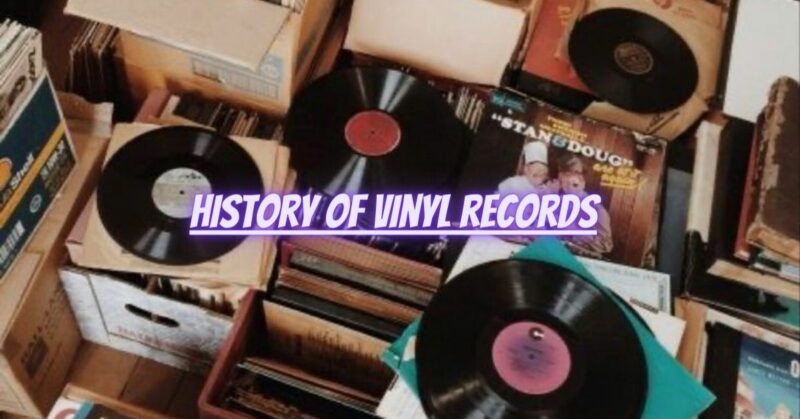Vinyl records have stood the test of time as a beloved medium for music playback, with a history that spans over a century. From the humble beginnings of analog sound to the digital revolution and subsequent resurgence, vinyl records have left an indelible mark on music culture. In this article, we will take a captivating journey through the history of vinyl records, tracing their evolution and enduring appeal.
- The Birth of Analog Sound: The foundation for vinyl records was laid in the late 19th century when inventors and engineers began experimenting with sound recording and reproduction. Innovations like Thomas Edison’s phonograph and Emile Berliner’s gramophone introduced the concept of recording sound waves onto a medium, using rotating cylinders or flat discs coated with a material called shellac.
- The Rise of the 78 RPM Era: The 78 revolutions per minute (RPM) era dominated the early 20th century. These records, made from shellac, were typically 10 inches or 12 inches in diameter and played at a fixed speed. They revolutionized the music industry, allowing for widespread distribution of recorded music and fueling the popularity of jazz, blues, and big band music.
- The Introduction of Vinyl: In the 1940s, vinyl began to replace shellac as the primary material for record production. Vinyl offered numerous advantages, including increased durability, lighter weight, and the ability to produce records with longer playing times. Columbia Records introduced the 12-inch long-playing (LP) format, which played at 33 1/3 RPM and could hold up to 20 minutes of music per side. This format allowed for more extended classical compositions and albums with multiple tracks.
- The Advent of Stereo and High Fidelity: The 1950s witnessed significant advancements in audio technology, with the introduction of stereo sound and high-fidelity recordings. Stereo records featured separate channels for left and right audio, providing a more immersive listening experience. The push for high fidelity led to improvements in recording techniques, mastering processes, and the use of higher-quality equipment, resulting in records with enhanced audio quality.
- The Rise of the Compact Disc and the Vinyl Decline: In the 1980s, the compact disc (CD) emerged as a new digital audio format. CDs offered benefits like durability, portability, and noise-free playback, leading to a decline in vinyl record sales. Major record labels shifted their focus to CD production, relegating vinyl to a niche market.
- The Vinyl Resurgence: Despite the dominance of digital formats, vinyl records never disappeared completely. In the late 2000s, a resurgence in vinyl’s popularity began. Music enthusiasts rediscovered the tangible and immersive experience of vinyl, appreciating the album artwork, warm sound, and the ritual of flipping records. Independent record labels, collectors, and audiophiles played a crucial role in keeping the format alive and driving its resurgence.
- Vinyl in the Modern Era: Vinyl’s comeback gained momentum in the 2010s, with major artists and labels reissuing classic albums and releasing new music on vinyl. Record stores, both physical and online, witnessed a resurgence, catering to a growing demand for vinyl records. Vinyl sales continue to climb each year, attracting a new generation of music lovers seeking a tangible connection to the music they enjoy.
Conclusion: The history of vinyl records is a testament to the enduring power and allure of analog sound. From their humble beginnings as 78 RPM shellac discs to the introduction of vinyl LPs, stereo sound, and the recent resurgence, vinyl records have woven themselves into the fabric of music culture. The warmth, nostalgia, and physical engagement offered by vinyl records continue to captivate music enthusiasts, bridging generations and preserving the artistry of music in a tangible and timeless format. As technology advances, vinyl records remain a cherished medium, celebrating the beauty and authenticity of the analog sound experience.


